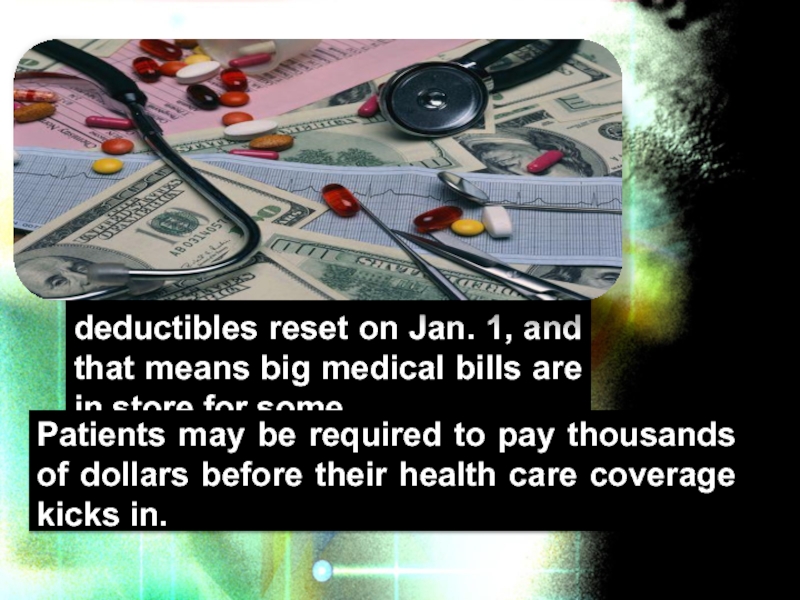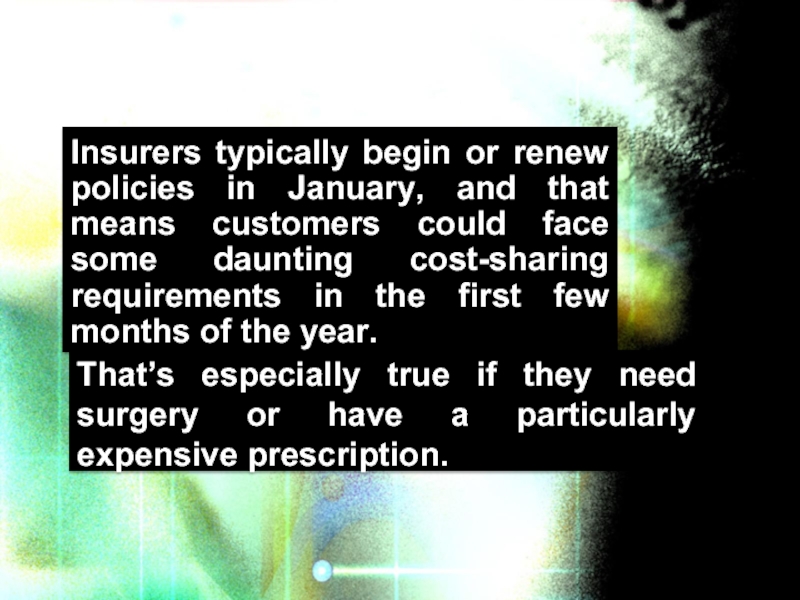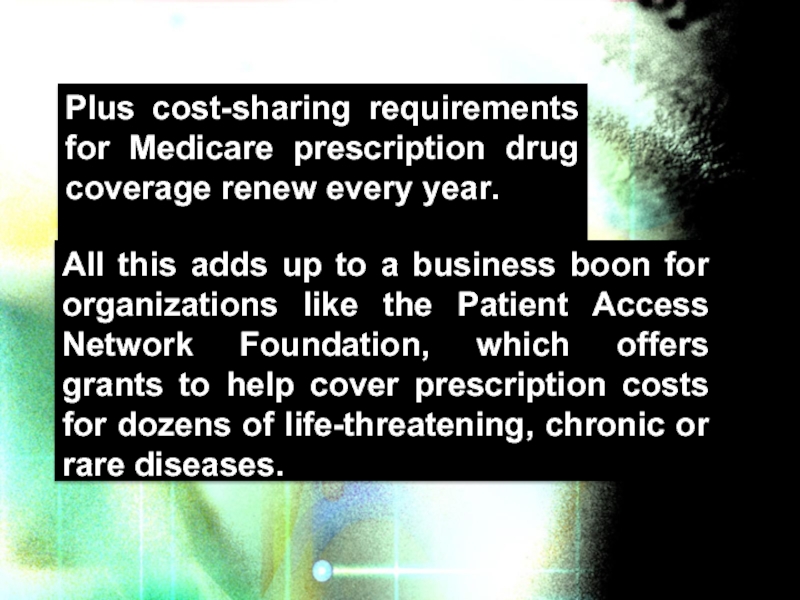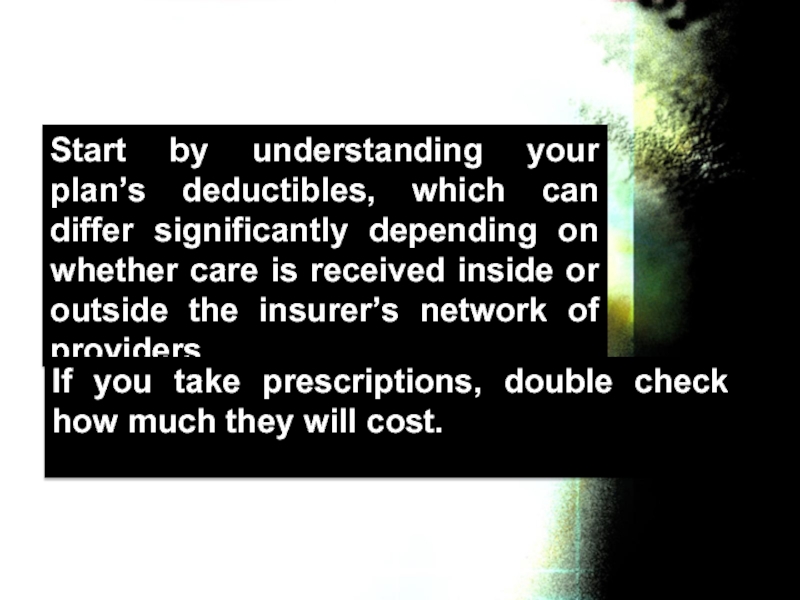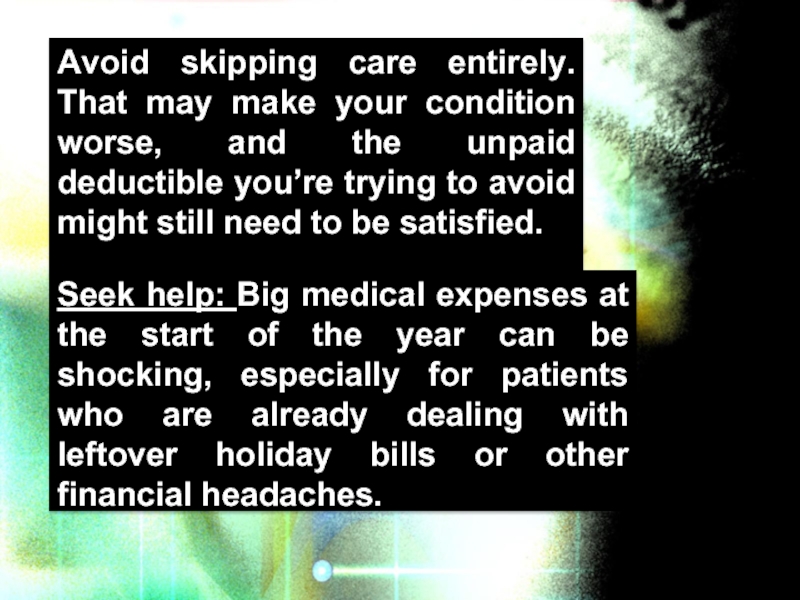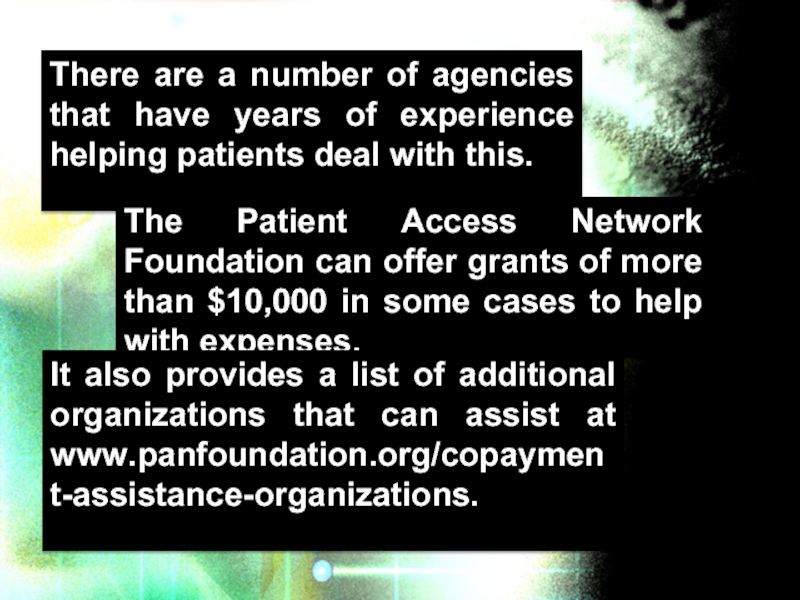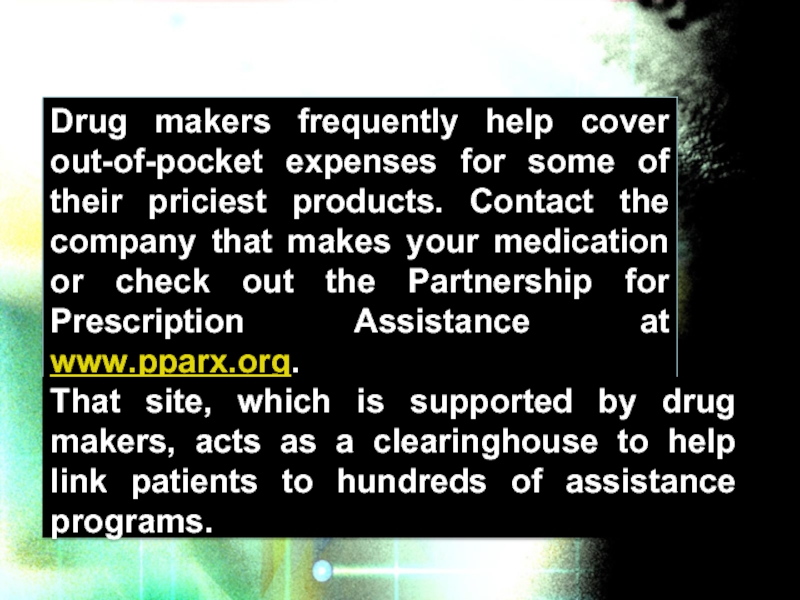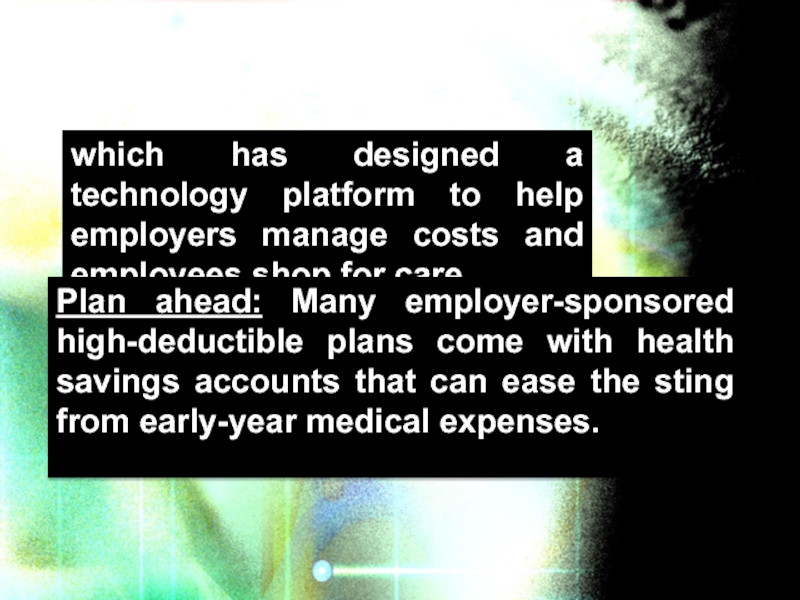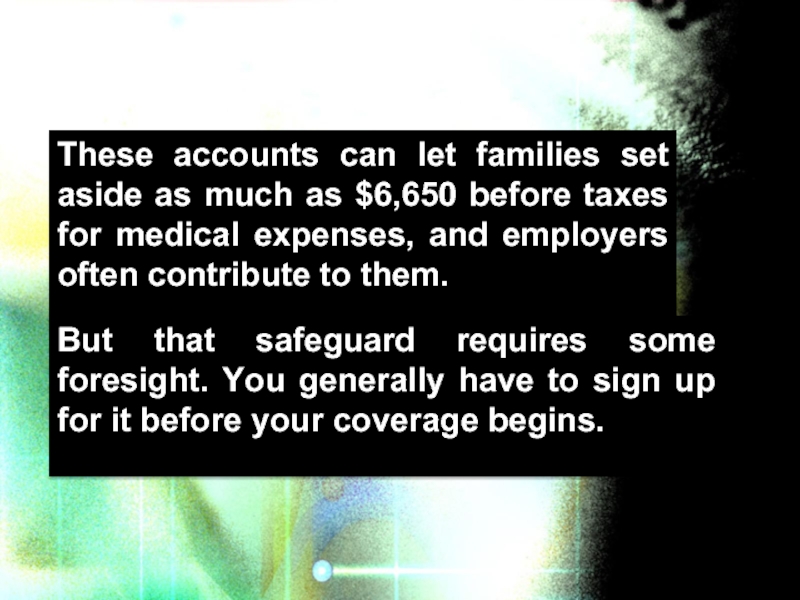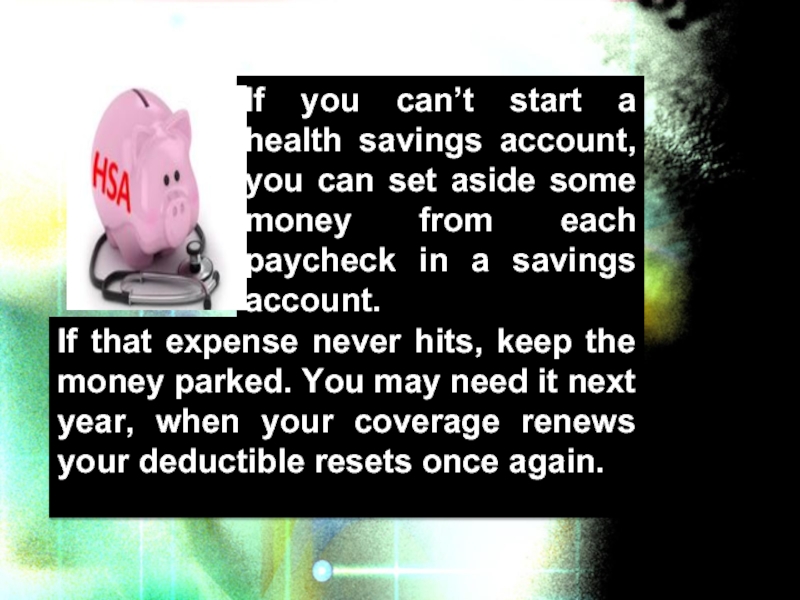- Главная
- Разное
- Дизайн
- Бизнес и предпринимательство
- Аналитика
- Образование
- Развлечения
- Красота и здоровье
- Финансы
- Государство
- Путешествия
- Спорт
- Недвижимость
- Армия
- Графика
- Культурология
- Еда и кулинария
- Лингвистика
- Английский язык
- Астрономия
- Алгебра
- Биология
- География
- Детские презентации
- Информатика
- История
- Литература
- Маркетинг
- Математика
- Медицина
- Менеджмент
- Музыка
- МХК
- Немецкий язык
- ОБЖ
- Обществознание
- Окружающий мир
- Педагогика
- Русский язык
- Технология
- Физика
- Философия
- Химия
- Шаблоны, картинки для презентаций
- Экология
- Экономика
- Юриспруденция
Tips for handling early-year medical expenses презентация
Содержание
- 1. Tips for handling early-year medical expenses
- 2. The clock on insurance deductibles reset on
- 3. Insurers typically begin or renew policies in
- 4. Deductibles topping $3,000 are common among plans
- 5. Plus cost-sharing requirements for Medicare prescription drug
- 6. The nonprofit had to hire about 80
- 7. Klein’s foundation is one option patients can
- 8. Start by understanding your plan’s deductibles, which
- 9. Drug coverage is commonly divided into tiers
- 10. but be clear on whether these choices
- 11. Avoid skipping care entirely. That may make
- 12. There are a number of agencies that
- 13. Drug makers frequently help cover out-of-pocket expenses
- 14. Shop around: Many insurers now offer smartphone
- 15. which has designed a technology platform to
- 16. These accounts can let families set aside
- 17. If you can’t start a health savings
- 18. For More details Visit our Blogs at http://www.westhillinsuranceconsulting.com/blog/
Слайд 2The clock on insurance deductibles reset on Jan. 1, and that
Patients may be required to pay thousands of dollars before their health care coverage kicks in.
Слайд 3Insurers typically begin or renew policies in January, and that means
That’s especially true if they need surgery or have a particularly expensive prescription.
Слайд 4Deductibles topping $3,000 are common among plans sold on the health
Companies also have been raising deductibles for years on employer-sponsored health plans, the most common form of coverage in the United States.
Слайд 5Plus cost-sharing requirements for Medicare prescription drug coverage renew every year.
All
Слайд 6The nonprofit had to hire about 80 temporary employees to help
“Everybody who works doing what we do has the same challenge,” CEO Daniel Klein said.
Слайд 7Klein’s foundation is one option patients can turn to if too
Understand your coverage: You can’t prepare for medical expenses until you know how big the bills might be. Your insurance should come with a plan summary that lays out important numbers.
Слайд 8Start by understanding your plan’s deductibles, which can differ significantly depending
If you take prescriptions, double check how much they will cost.
Слайд 9Drug coverage is commonly divided into tiers based on price, and
Most coverage offers some protection by capping the amount you are required to pay each year. But these caps might still expose patients to sizeable bills because they can climb higher than $6,000 for an individual and $13,000 for a family.
Слайд 10but be clear on whether these choices are equally effective. If
Talk to your doctor:
Physicians may be able to offer less-expensive treatment alternatives,
Слайд 11Avoid skipping care entirely. That may make your condition worse, and
Seek help: Big medical expenses at the start of the year can be shocking, especially for patients who are already dealing with leftover holiday bills or other financial headaches.
Слайд 12There are a number of agencies that have years of experience
The Patient Access Network Foundation can offer grants of more than $10,000 in some cases to help with expenses.
It also provides a list of additional organizations that can assist at www.panfoundation.org/copayment-assistance-organizations.
Слайд 13Drug makers frequently help cover out-of-pocket expenses for some of their
That site, which is supported by drug makers, acts as a clearinghouse to help link patients to hundreds of assistance programs.
Слайд 14Shop around: Many insurers now offer smartphone apps or other services
For instance, the cost of a primary care doctor visit can range from $117 to $461 inside an insurer’s coverage network in San Francisco, according to Cast light Health Inc.,
Слайд 15which has designed a technology platform to help employers manage costs
Plan ahead: Many employer-sponsored high-deductible plans come with health savings accounts that can ease the sting from early-year medical expenses.
Слайд 16These accounts can let families set aside as much as $6,650
But that safeguard requires some foresight. You generally have to sign up for it before your coverage begins.
Слайд 17If you can’t start a health savings account, you can set
If that expense never hits, keep the money parked. You may need it next year, when your coverage renews your deductible resets once again.

